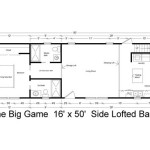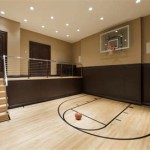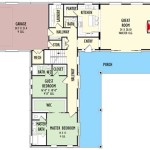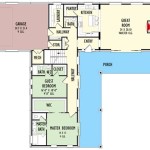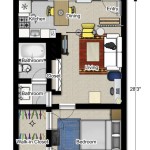Floor Plans With Hidden Passageways: A Journey Through Design and Functionality
The concept of hidden passageways within a floor plan evokes a sense of mystery, intrigue, and practical functionality. Once relegated to the realms of historical castles, grand estates, and the fictional worlds of espionage and fantasy, concealed routes are finding renewed interest in modern residential and commercial architecture. This article explores the various facets of floor plans incorporating hidden passageways, examining their historical significance, practical applications, design considerations, and construction challenges.
Hidden passageways are not simply about novelty; they address a range of functional needs, from security and personal safety to aesthetic enhancement and playful design. Their integration into a floor plan requires careful planning, architectural expertise, and a keen understanding of building codes and regulations. The success of a hidden passageway lies in its seamless integration with the existing structure, its accessibility, and the overall harmony it brings to the design.
Historical Roots and Evolution
The history of hidden passageways is rich and varied. In medieval castles, they served as vital escape routes during sieges and surprise attacks. These secret tunnels, often winding and labyrinthine, allowed inhabitants to move undetected, resupply defenses, or flee to safety. Grand estates and historic houses incorporated hidden rooms and passages for storing valuables, providing discreet access for servants, or facilitating clandestine meetings. The need for privacy, security, and strategic advantage drove the development of increasingly sophisticated concealment techniques.
As architectural styles evolved, so did the methods of concealing passageways. Bookcases that pivoted, seemingly solid walls that swung open, and trapdoors cleverly disguised in flooring became hallmarks of sophisticated design. The Industrial Revolution brought new materials and construction techniques, allowing for even more elaborate and subtle methods of integrating hidden routes into buildings. In the 20th and 21st centuries, the rise of security concerns has fueled a renewed interest in hidden passageways, particularly in high-end residential and commercial properties.
Modern applications of hidden passageways often incorporate advanced technology, such as biometric access controls, remote operation, and sophisticated alarm systems. While the core concept of concealment remains the same, the methods and materials used have become far more advanced, allowing for seamless integration with modern architectural styles.
Practical Applications in Modern Architecture
The use of hidden passageways is no longer limited to historical preservation or extravagant displays of wealth. Several practical applications are driving their resurgence in modern architecture. One primary application is security. In residential settings, hidden rooms or panic rooms connected by concealed passages can provide a safe haven during emergencies, such as home invasions or natural disasters. These rooms can be fortified and equipped with communication devices, allowing residents to contact authorities and remain secure until help arrives.
Beyond security, hidden passageways can enhance privacy and create specialized spaces within a home. For example, a hidden study or library accessed through a secret door in a bookcase can provide a secluded retreat for work or relaxation. Similarly, a hidden playroom or entertainment area can offer children a private and engaging space without disrupting the overall aesthetic of the home. These applications cater to the desire for personalized spaces that reflect individual interests and lifestyles.
In commercial settings, hidden passageways can serve various purposes. In retail environments, they can facilitate secure stock movement and prevent theft. In office buildings, they can provide discreet access for sensitive personnel or create secure areas for confidential meetings. The specific application depends on the nature of the business and the security requirements of the building.
Another crucial application is the preservation of aesthetic integrity. In buildings where architectural features are highly valued, hidden passageways can allow for the integration of modern amenities and technologies without compromising the original design. For example, a hidden door can conceal access to a media room or a wine cellar, maintaining the historical character of the building while providing modern conveniences.
Design Considerations and Construction Challenges
Designing floor plans with hidden passageways requires careful consideration of structural integrity, building codes, accessibility, and overall aesthetic integration. The placement of hidden doors and passages must be carefully planned to avoid compromising the structural support of the building. Load-bearing walls cannot be arbitrarily breached, and any modifications must be engineered to maintain the stability of the structure. This often requires collaboration between architects, structural engineers, and experienced contractors.
Building codes and regulations also impose constraints on the design of hidden passageways. Emergency exits must be clearly marked and accessible, and fire safety regulations must be strictly adhered to. Hidden doors and passages should not obstruct or impede access to emergency exits, and they must be designed to allow for safe evacuation in the event of a fire or other emergency. Compliance with these regulations is essential to ensure the safety of occupants and avoid legal liabilities.
Accessibility is another critical consideration. Hidden passageways should be designed to be easily accessible to those who need to use them, even in stressful situations. The mechanisms for opening and closing hidden doors should be intuitive and reliable, and the pathways should be well-lit and free from obstacles. In some cases, it may be necessary to incorporate accessibility features, such as ramps or lifts, to accommodate individuals with disabilities.
The aesthetic integration of hidden passageways is also paramount. The goal is to create a seamless transition between the hidden space and the surrounding environment, so that the passageway does not appear out of place or disrupt the overall design of the building. This requires careful attention to detail in the selection of materials, finishes, and hardware. The hidden door or passage should blend seamlessly with the surrounding walls, floors, or furniture, creating a sense of mystery and intrigue without sacrificing aesthetic appeal.
Construction challenges associated with hidden passageways are often complex and require specialized skills. The installation of hidden doors and mechanisms requires precise measurements and meticulous craftsmanship. The integration of technology, such as biometric access controls or remote operation systems, requires expertise in electrical and mechanical engineering. The overall construction process requires careful coordination between various trades to ensure that the hidden passageway is built to the highest standards of quality and safety.
In summary, floor plans with hidden passageways represent a fascinating blend of historical intrigue and modern functionality. Their integration into a building requires careful planning, architectural expertise, and a commitment to quality craftsmanship. While the design and construction process can be challenging, the rewards of a well-executed hidden passageway are significant, offering enhanced security, privacy, and aesthetic appeal.

Storybook Inspiration With Secret Passage 17570lv Architectural Designs House Plans

House Plans With Rooms And Passageways

Secret Room Rooms Passageways

Mediterranean Style House Plan 5 Beds 3 Baths 2957 Sq Ft 80 179 Houseplans Com

Colonial House Plans W An English Courtyard Garden Inside

Traditional Homes With Closed Floor Plans Blog Eplans Com

Home Plan Elise Sater Design Collection

Craftsman Plan 1 399 Square Feet 3 Bedrooms 2 Bathrooms 036 00176

European Style House Plan 4 Beds 5 Baths 6574 Sq Ft 968 43 Dreamhomesource Com

Traditional Homes With Closed Floor Plans Blog Eplans Com

